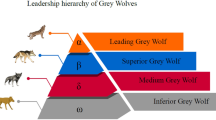Abstract
Schlieren imaging in wind-tunnels is extensively utilized to study the effects of air on a moving object. One of the interested subjects for research is to study the effects of speed change on the object surface. Speed change results in the occurrence of shock waves, which are visualized as lines on Schlieren images. However, computing new relevant velocity of the wind-tunnel requires solving sophisticated and time-consuming formulas. In this paper, we investigate the problem of estimating relevant speed of the object after occurrence of a shock wave. At first, we propose a feature set of the image that are influenced by the shock wave. Therefore, these features are extracted by the developed image processing component. Afterward, we propose a fuzzy genetic algorithm to estimate the new velocity of the object. We make use of the genetic algorithm to tune the membership functions of the variables of the fuzzy system by leveraging some training images. The evaluation is performed by computing the accuracy of the velocity estimation. For this, the proposed fuzzy system runs by the extracted features of these images and estimates the new velocity. The comparison of the estimated with the real values shows a very close and accurate estimation.









Similar content being viewed by others
References
Acharya T, Ray AK (2005) Image processing: principles and applications. Wiley, London
aerolab (2016). http://www.aerolab.com/Schlieren.html
Buckley JJ, Hayashi Y (1994) Fuzzy genetic algorithm and applications. Fuzzy Sets Syst 61:129–136
Dalziel SB, Hughes GO, Sutherland BR (2000) Sutherland whole field density measurements by synthetic Schlieren. Exp Fluids 28:322–335
Davidhazy A (2006) Introduction to shadowgraph and Schlieren imaging. Rochester Institute of Technology, Rochester
Fu S, Wu Y (2011) Detection of velocity distribution of a flow field using sequences of Schlieren images. Opt Eng 40:1661–1666
Gonzalez RC, Woods RE (2008) Digital image processing. Prentice Hall, Englewood Cliffs
Hargather MJ, Lawson MJ, Settles GS (2011) Seedless velocimetry measurements by Schlieren image velocimetry. AIAA J 49:611–620
John D, Anderson JR (1991) Fundamentals of aerodynamics. McGraw-Hill, Inc, New York
Manshadi MD, Vahdat-Nejad H, Kazemi-Esfeh M, Alavi M (2016) Speed detection in wind-tunnels by processing Schlieren images. Int J Eng 29:962–967
Mazumdar A (2013) Principles and techniques of Schlieren imaging systems. Columbia University, New York
Meier G (2002) Computerized background oriented Schlieren. Exp Fluids 33:181–187
Onu K, Flynn MR, Sutherland BR (2003) Schlieren measurement of axisymmetric internal wave amplitudes. Exp Fluids 35:24–31
Raffel M, Willert CE, Wereley S, Kompenhans J (2007) Particle image velocimetry: a practical guide. Springer, New York
Rahnama-ye-Moqaddam R, Vahdat-Nejad H (2015) Designing a pervasive, eye movement-based system for ALS and paralyzed patients. Paper presented at the international conference on computer and knowledge engineering, Mashhad, Iran
Schlieren system (2014). https://www.grc.nasa.gov/www/K-12/airplane/tunvschlrn.html
Settles GS (2001) Schlieren and shadowgraph techniques. Springer, New York
Sorensen RM (ed) (1997) Wave refraction, diffraction, and reflection. In: Basic coastal engineering. Springer, New York, pp 78–107
Townend H (1936) A method of air flow cinematography capable of quantitative analysis. Aeronaut Sci 3:343–352
Vahdat-Nejad H, Pourreza HR, Ebrahimi H (2006) A novel fuzzy technique for image noise reduction. World Academy of Science, Prague
Author information
Authors and Affiliations
Corresponding author
Ethics declarations
Conflict of interest
The authors declare that they have no conflict of interest.
Additional information
Communicated by V. Loia.
Rights and permissions
About this article
Cite this article
Vahdat-Nejad, H., Dehghan-Manshadi, M. & Kherad, M. A fuzzy genetic approach for velocity estimation in wind-tunnel. Soft Comput 23, 3519–3527 (2019). https://doi.org/10.1007/s00500-018-3011-6
Published:
Issue Date:
DOI: https://doi.org/10.1007/s00500-018-3011-6




